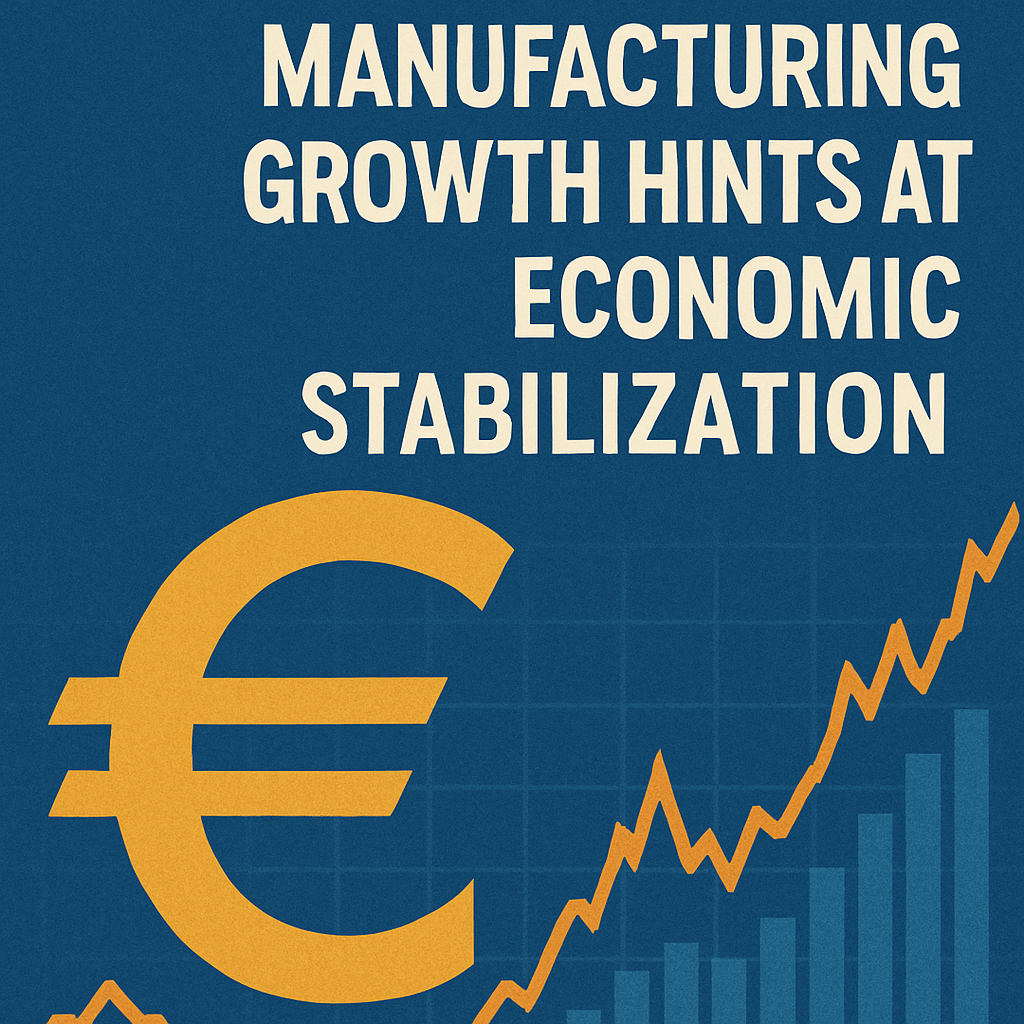Eurozone Manufacturing Growth Hints at Economic Stabilization

As of midday (13:05 CEST), major European indexes have slipped into negative territory, following China’s statement accusing the United States of “severely violating” the terms of their recent trade agreement. This development sent ripples across global markets, as investors assessed the implications of escalating trade tensions between these two economic giants.
Notably, President Donald Trump’s announcement to double tariffs on steel and aluminum from 25% to 50% by this Wednesday has stoked concerns about a potential trade war, further contributing to a climate of uncertainty for businesses and investors alike. The EURO STOXX 50 index recorded a decline of 0.68%, while Germany’s DAX dropped by 0.48%, and France’s CAC 40 saw a 0.63% decrease.
“Donald Trump has upset markets once again,”
— Russ Mould, Investment Director at AJ Bell
In an email note sent to Euronews, Mould commented on the frustrating nature of Trump’s inconsistent policies, saying, “Doubling import taxes on steel and aluminum, and aggravating China once again, means we face a situation where uncertainty prevails. Trump’s continuous moving of the goal posts is frustrating for businesses, governments, consumers, and investors.” Current equity market dynamics reflect this sentiment, with futures indicating a downward trend anticipated as Wall Street opens for trading on Monday.
In tandem with these developments, safe-haven assets like gold have experienced a resurgence as investors seek stability amidst heightened volatility.
Trade Dynamics and Economic Indicators
The latest communiques from the White House not only targeted China but also directed strong rhetoric towards the European Union. Both regions indicated potential retaliatory measures should U.S. tariffs be implemented, emphasizing the fragile state of international trade relations.
Despite the bearish tone set by geopolitical issues, there were some encouraging economic indicators in the United States. The Federal Reserve’s preferred inflation gauge, the Personal Consumption Expenditures (PCE) index, came in lower than market expectations. Furthermore, consumer sentiment showed surprising resilience, despite the ongoing trade disputes.
“Such optimism may prove fleeting, as it was largely based on a perceived cooling of U.S.-China tensions in the earlier month which has rapidly dissipated,” noted Richard Hunter, head of markets at Interactive Investor. His analysis also pointed out that the upcoming non-farm payrolls report, expected to indicate the addition of 130,000 jobs in May compared to the prior month’s 177,000, could provide a clearer picture of the labor market amidst trade-induced pressures.
Market Reactions in the U.S. and Asia
As U.S. markets concluded May on a relatively flat note, the month overall saw a robust rally for major indices, buoyed by hopes for potential tariff reconciliations. However, Hunter pointed out that market sentiment could face immediate challenges with June approaching, indicating that U.S. markets have reclaimed much of the prior months’ losses. Yet, the year-to-date performance remains mixed, with the Dow Jones and Nasdaq down by 0.6% and 1% respectively, while the S&P 500 managed a modest gain of 0.5%, largely due to revived interest in large-cap technology stocks.
On the Asian front, markets struggled against a backdrop of geopolitical tensions fueled by the ongoing Russia-Ukraine conflict. The Hang Seng index bore the brunt of negative sentiment, especially surrounding the prospective tariff increases on aluminum and steel. With mainland China observing a public holiday, the looming reopen may exacerbate losses projected from troubling economic indicators revealing a continuing contraction in manufacturing activities.
Outlook and Future Risks
As investors continue to navigate through complex economic landscapes, the focus will remain on the interplay between trade policies and market dynamics. Potential retaliation from China and the EU could amplify future market instability, making it imperative for observers to stay attuned to economic data releases and geopolitical developments.
The weekend’s heightened tensions underline the fragility of the current recovery narrative within the Eurozone manufacturing sector. While there are indications of stabilization, the pathway to sustained recovery is fraught with challenges that could significantly impact investor sentiment and economic growth moving forward.
Source: euronews